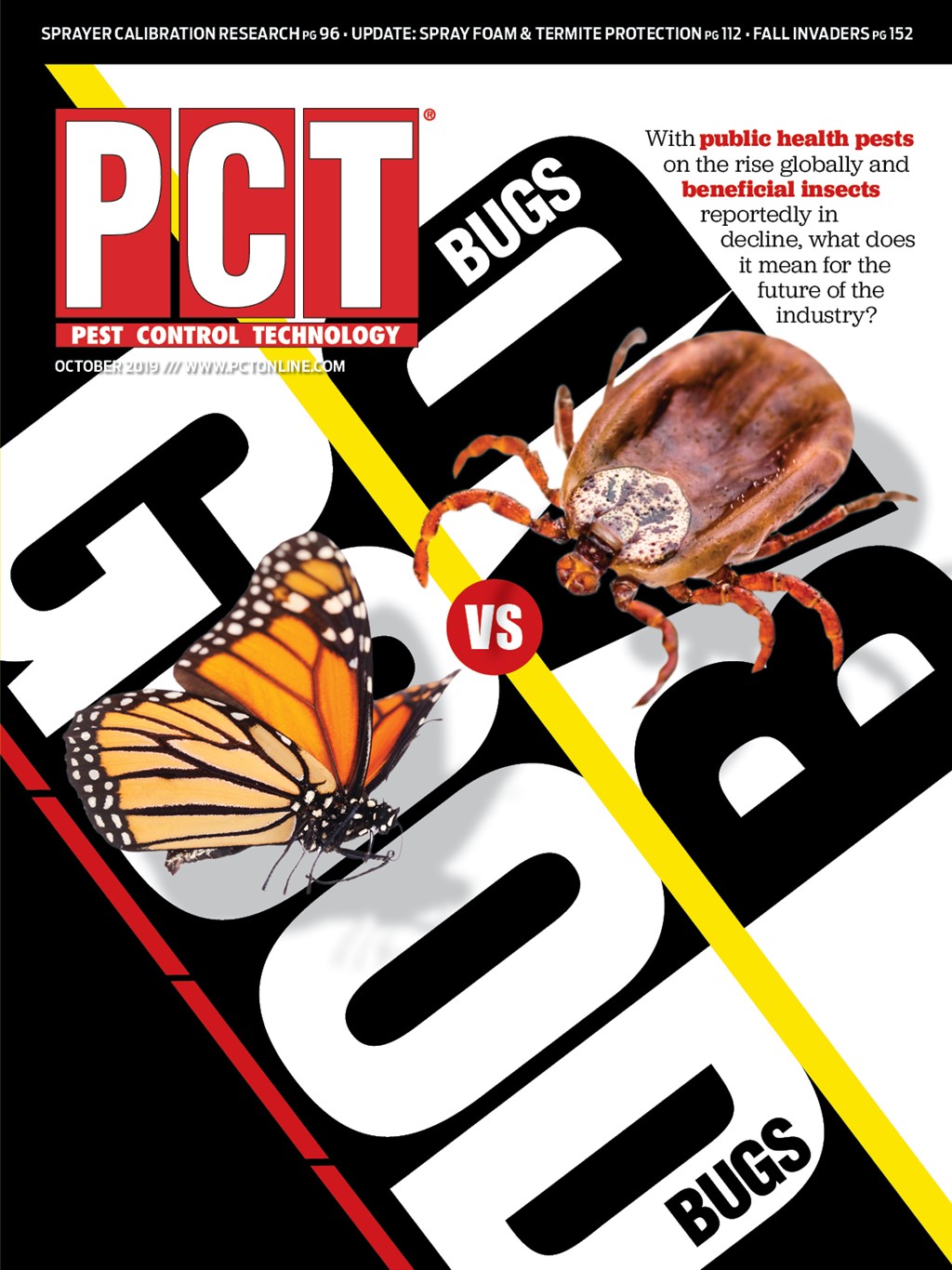

Fall invaders are not only nuisance pests around structures, but they are also a source for health concerns.
They start their annoying journey in the fall when they are noticed congregating on exterior walls in big numbers. If not excluded, their presence continues when they show up indoors on sunny winter days. Multicolored Asian lady beetle allergens can cause allergic reactions ranging from sneezing to asthma. Moreover, carcasses of fall invaders in wall voids attract dermestid beetles (hide beetles, larder beetles, carpet beetles, etc.) and ants (carpenter ants, etc.). Therefore, preventing fall invaders is a necessity for “healthy” structures. The following are five important tips to help PMPs successfully manage fall invader pests.
1. Be prompt.
Timing for fall invaders control is very important. All pesticide applications and exclusion practices, such as replacing worn outdoor sweeps, sealing all pest entry points, tightening screens, windows and doors, etc., should be made early enough in the fall before fall- invading pests become present on or around a structure. If pesticide treatments are applied in late fall or early winter, customers will complain about live or dead bugs inside living spaces; or, overwintering insects are already established inside deep wall voids, rendering the exterior pesticide treatment ineffective. However, an extended summer or heavy rains may render the initial liquid treatment ineffective and another treatment may be needed/justified in late fall to maintain protection. Retreatment due to weather conditions should be done on a case-by-case basis.
2. Be efficient.
Use a proven long-lasting insecticide with a “knockdown” capability. Residual liquid insecticides are usually used in preventive exterior treatments of fall invader pests. These products leave behind long-lasting residual effects up to 30 days or more and also kill fall pests before they make their way into the indoors.
3. Be thorough.
A thorough coverage of pesticide applications is essential for effective fall invader management and reducing callbacks. Apply the pesticide carefully, covering all sides of the building. Pay particular attention to the sunlit sides where pests usually congregate. Keep in mind that high entryways around soffits or rooflines provide fall invaders, especially cluster flies, access into the attic or crawlspace. Accordingly, treat under eaves and all possible entry points under and around rooflines.
4. Be conscientious.
Follow all restrictions and requirements on the pesticide label. It is illegal to treat in a manner inconsistent with the label directions. For example, when using a pyrethroid-based product, do not apply a coarse, low-pressure spray on any surfaces located above impervious surfaces (i.e., artificial structures such as pavement). Still, you can treat these surfaces up to a maximum height of 3 feet above the ground. Also, you can apply crack, crevice and spot treatments to adequately cover all common pest entry points on sides above impervious surfaces. You can always treat areas permanently protected from rain, such as under eaves. If the side is above permeable surfaces (lawn, soil, mulch, etc.), you should treat the whole side, paying attention to entryways as previously mentioned.
5. Be a communicator.
Manage customer expectations. Let the customer know:
Dead bugs will be seen laying on the ground. There are no concerns if pets eat some of the dead bugs, but it is better if the customer cleans them up.
Bugs do not die right away after treatment. The time needed to kill fall invader pests depends on the time of the application, species, thoroughness of applications (coverage), rain and temperature conditions. It could take up to 24 hours to provide 100 percent mortality of fall invader pests. Therefore, customers should expect to see live bugs after treatment for up to 24 hours.
Due to extended warm weather, live fall invader pests still can be seen around the structure after treatment. This is because of the continuous movement of these pests from adjacent areas. However, if the treatment is completed before the bugs are already inside the wall voids, all bugs should die eventually due to exposure. If there was no or delayed treatment in the fall, it is expected that fall invader pests are already hiding indoors. In this case, insecticide treatments indoors will not eliminate overwintering pests because:
- It is nearly impossible to treat every hidden area that may be harboring them.
- The bugs are emerging from hidden areas that are inaccessible to insecticides.
- Space applications/“fogging” will not penetrate hiding areas (deep voids).
- Residual sprays generally kill fall invaders slowly.
- Insect light traps (ILTs) can help, but their use will not solve the problem.
FINAL THOUGHTS. To prevent fall invaders from entering a structure, apply all exclusion materials and pesticide treatments early enough before adult fall invader pests begin moving to the structure; otherwise, insecticide treatments indoors will not eliminate them. Be thorough using a proven long-lasting residual insecticide and follow the label directions. Communicate the treatment expectations to the customer.
The author is the technical and training director at Adam’s Pest Control, Medina, Minn.

Explore the October 2019 Issue
Check out more from this issue and find your next story to read.
Latest from Pest Control Technology
- A Cautionary Tale of Honey Bees and Heat
- Mingle a Mile High in Denver
- PMP Helping Those in Need by Ensuring Secondhand Furniture is Free of Bed Bugs
- PPMA Unveils New Design of Mainframe Site
- UCR Entomologist Makes a Case for Eating Bugs
- Brown Recluse Spider Management: Correcting Contributing Conditions
- FMC Announces Donation to PestVets Give Back Program
- Liphatech Announces Refreshed Brand, Website and New Strategic Direction





